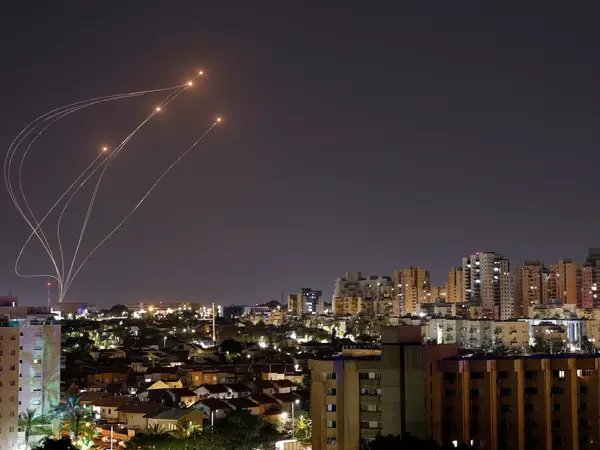Chaos at the hands of Iran’s allies and proxies rippled across the region this weekend, with its effects felt from Israel to the US with Israel blaming Tehran.
Last Thursday saw the worst rocket attacks launched on Israel from Lebanon’s south in the most intense flare-up since 2006, at the same time as rocket attacks were being launched from Hamas-controlled Gaza in Israel’s south.
On Saturday night, that front extended to Syria, where rockets were fired into the Golan Heights. In both cases, Israel has strategically but moderately responded, attacking the likes of rocket launchers, radar and artillery positions in the wake of the attacks.
The turbulence continued after the announcement that the US Navy has deployed a guided-missile submarine capable of carrying up to 154 Tomahawk missiles to the Middle East in a show of force toward Iran following recent tensions. Just last month the US launched airstrikes against Iran-backed forces in Syria after a rocket attack killed a US contractor and wounded seven other Americans in that country’s northeast.
The latest deployment is believed to follow the uncovering of a plot by Iran’s Revolutionary Guards Aerospace Force which was preparing a drone attack against Israeli-owned civilian merchant vessels sailing in the Persian Gulf and the Arabian Sea, according to a report in The New York Times.
In a rare acknowledgment of the location and deployment of submarines, Commander Timothy Hawkins, a spokesman for the 5th Fleet based in Bahrain, said it can carry up to 154 Tomahawk land-attack cruise missiles and is deployed to US 5th Fleet “to help ensure regional maritime security and stability”.
]The 5th Fleet patrols the crucial Strait of Hormuz, the narrow mouth of the Persian Gulf through which 20% of all oil transits. Its region includes the Bab el-Mandeb Strait off Yemen and the Red Sea stretching up to the Suez Canal, the Egyptian waterway linking the Mideast to the Mediterranean Sea.
The US, UK and Israel have accused Iran of targeting oil tankers and commercial ships in recent years, allegations denied by Tehran. The US Navy has also reported a series of tense encounters at sea with Iranian forces that it said were being recklessly aggressive.
And now, many are waiting to see what Israel’s bigger response will be to the attacks from Lebanon, which at minimum, have the tacit approval of Hezbollah which controls the area, but no doubt, has the blessing of Tehran.
So far, Israel has cautiously attributed blame to Palestinian factions in Lebanon, compounded by the fact Hamas’ political chief, Ismail Haniyeh, had met with Hezbollah leader Hassan Nasrallah on the eve of the rocket barrage.
The Israel Defense Forces’ spokesman alluded to the fact that investigations into Iranian involvement were underway in a press briefing Thursday but this weekend, Israel’s Minister of Defense Yoav Gallant spoke with his US counterpart, Secretary of Defense Lloyd Austin, and for the first time, claimed the attacks from both Gaza and Lebanon, were done "with the backing of Iran”.
While Hamas continues its campaign of chaos, the prospects for calm look slim. Carefully orchestrated riots inside the world’s third holiest Muslim site, Al Aqsa Mosque in Jerusalem, provoke often violent responses from Israel Police, appointed to safeguard freedom of worship.
Images of masked rioters in physical confrontations with police inside the mosque continue to stir the hatred and fuel Iran’s strategy for weakening Israel’s image in the public eye.
The Iranian regime’s media is boasting of its proxies destabilizing Israel and intimidating “the Zionists”.
On Sunday, Mohammad Baqer Qalibaf, speaker of Islamic Republic’s parliament, spoke in the public session of the legislative body and called Israeli retaliation “barbaric attacks”.
He left little to the imagination about the regime’s future plans. The multi-faceted war against Israel continues unabated. He warned: “The Zionist regime is in its weakest state in history and knows that a harsh and crushing punishment awaits them.”
